Mayan Architectural Marvels
The ancient Mayan civilization, known for its sophisticated culture and advanced knowledge, left behind a legacy of architectural achievements. Their construction techniques, which included the use of limestone and the development of a cement-like material, allowed them to create sturdy structures. Mayan builders also employed corbel arches, enabling the construction of archways and vaults without the use of keystone cuts, an important innovation in architectural design.
One of the notable contributions of Mayan architecture is the stepped pyramid. These pyramids, such as El Castillo at Chichen Itza, served as temples and platforms for ceremonies and incorporated astrological alignment.1 The structure of these pyramids reflects the Mayans' understanding of astronomy and its integration with religious and social practices. This concept influences some modern architects who seek to integrate environmental and astronomical elements into their designs.
Mayan cities demonstrated urban planning, showing an awareness of their environment. They included:
- Raised roads known as sacbeob to connect important complexes
- Reservoirs for water collection
- Designed plazas
These features demonstrate an approach to city planning that considered practical needs while fostering communal activities and religious rituals. Modern city planners recognize the value of such design in creating urban spaces that prioritize sustainability and community.
The integration of art and architecture is another hallmark of Mayan architecture, with buildings adorned with carvings and sculptures that depict gods, kings, and cosmic events.2 This concept of blending functionality with aesthetic detail is seen in some modern approaches where buildings reflect cultural narratives and art.
Mayan architects' use of astronomical alignment in their buildings has influenced some contemporary practices where design considers solar patterns for energy efficiency. Buildings today often incorporate elements like strategic orientation and window placement to maximize natural light and minimize energy use, utilizing an understanding of the sun's influence.
The Mayans' use of terracing for agriculture on challenging terrain has inspired modern methods of landscape architecture and sustainable farming. These techniques demonstrate an early form of environmental stewardship by optimizing land use, preventing erosion, and sustaining large populations, ideas that are increasingly relevant in today's context of climate change.
Mayan architecture provides lessons on sustainability, integration with nature, and the blending of functionality with artistic elements. Their constructions are sources of inspiration that demonstrate the understanding ancient societies had of the world around them and how we might use similar principles to address modern challenges in architecture and urban planning.
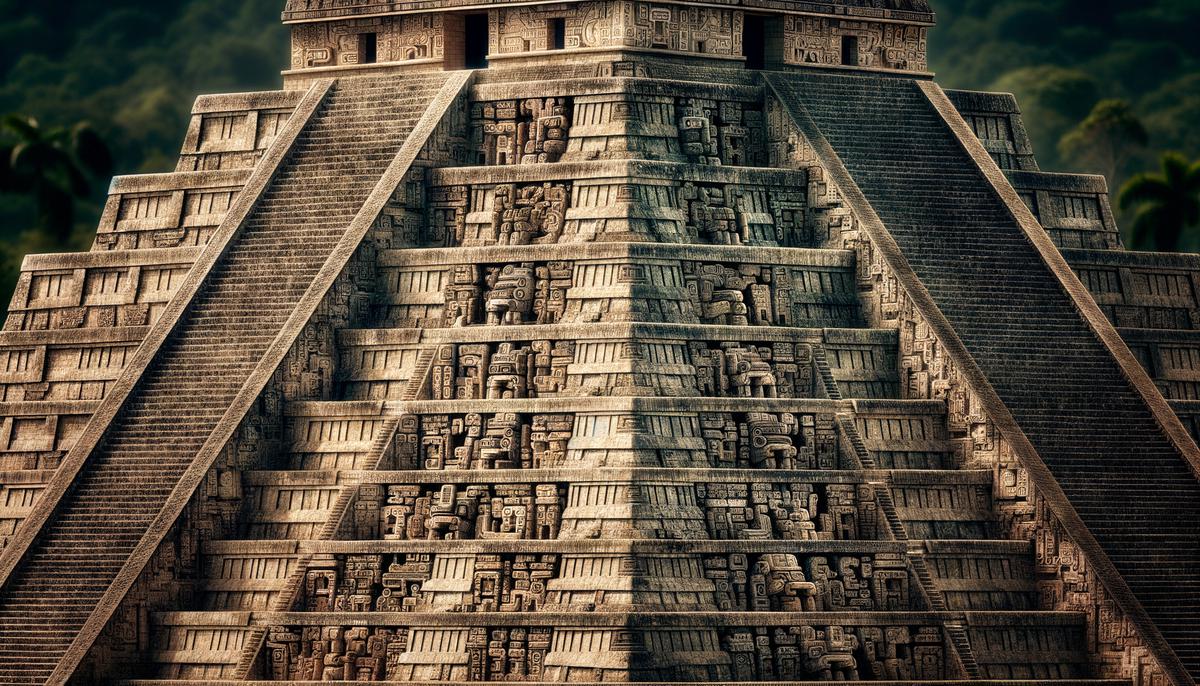
Artistic Expressions of the Maya
Mayan art, interwoven with daily and spiritual life, played an important role in expressing the beliefs, accomplishments, and understanding of the natural world in this ancient civilization. By exploring the forms—sculpture, ceramics, textiles, and more—that Mayan art encompasses, one can gain insights into how this ancient creativity continues to influence modern art.
Mayan artists were storytellers and conveyors of cultural identity, blending material skill with spiritual reflection. Sculpture illustrates this synergy. Sculptures of deities and rulers adorned public squares and temples, their stone surfaces reflecting Mayan reverence for the cosmos and their ruling elites. This emphasis on sculpture as commemoration is seen in contemporary public art, where civic and historical figures are often represented in stone or metal, contributing to a location's cultural and historical identity.
Mayan ceramics tell stories of ritual, mythology, and daily life with intricate detail. Potters incorporated narrative elements into vessels and figurines, combining form, function, and symbolism. The modern fascination with narrative elements in ceramics is influenced by this ancient precedent.
Textiles were another medium for Mayan artistry. Skilled weavers created fabrics with designs that signified one's status, community, and beliefs, employing colors derived from natural dyes.3 The vibrant textiles of Mayan heritage continue to inspire modern fashion and design with their intricate patterns and sustainable sourcing.
The thematic richness and stylistic variety of Mayan artworks have influenced diverse contemporary artistic expressions. The contemporary art world has explored the Mayan integration of the spiritual with the material, with artists representing metaphysical ideas through abstract forms.
The Mayan principle of incorporating art into functional objects has reinforced a holistic view of art in modern practices, where aesthetic value is combined with utility. This approach connects ancient craftsmanship with modern minimalism and functional art.
The reverence for natural forms and forces in Mayan art parallels today's growing artistic movements toward sustainability and environmental awareness. Mayan art serves as a reminder of our interconnectivity with the natural world and the power of art to reflect that bond.
Mayan art serves as an example of the enduring power of creativity to express a civilization's knowledge and aspirations. These ancient artworks offer a dialogue that spans time and culture, providing lessons in the relationship between humanity, the divine, and artistic expression.
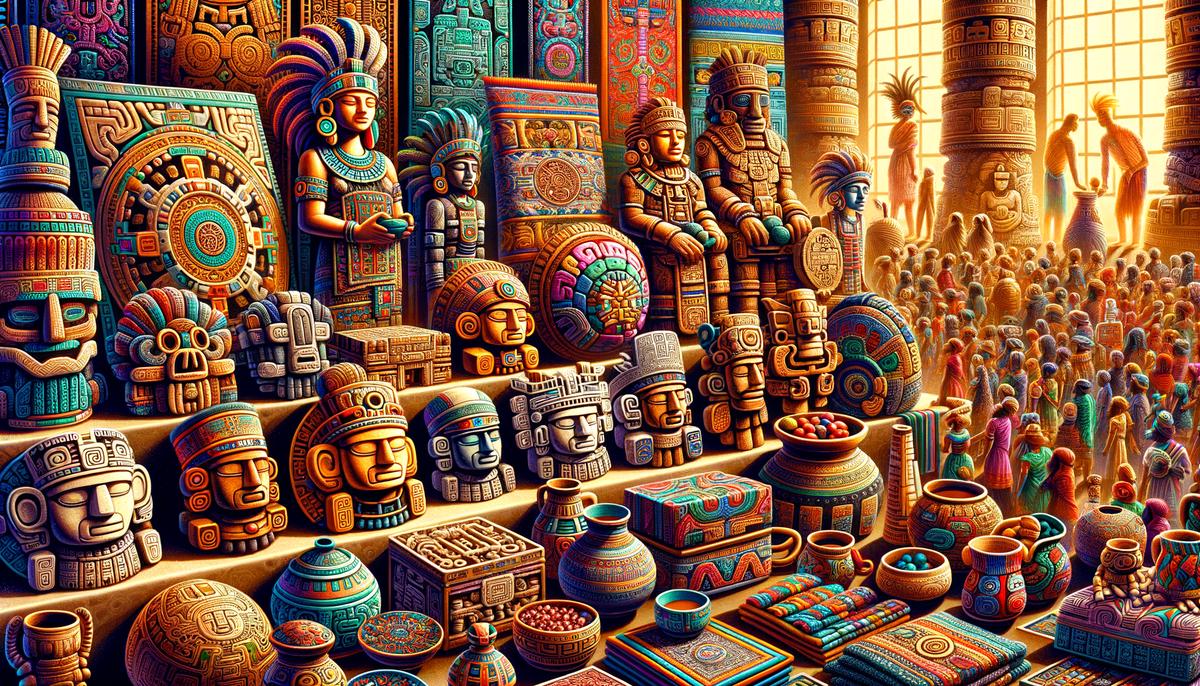
Mayan Contributions to Science
The ancient Maya civilization, known for its pyramids and artistic legacy, was also a source of remarkable scientific advancements. The Maya contributed significantly to human knowledge and laid foundations for future explorations in science.
One of the significant achievements of the Maya is their development of a complex and accurate calendar system. This illustrated their understanding of time and their astronomical observations. The Maya calendar, particularly the Long Count, allowed them to chart historical events over long periods.4 Today, the cyclicality and precision found in the Maya calendar influences modern computational and chronological tools.
In mathematics, the Maya introduced the concept of zero — an important idea that transformed mathematics into the comprehensive system we recognize today. This concept demonstrated a mathematical sophistication that enabled the construction of architecture and astronomical calculations. Present-day software algorithms and computational models are influenced by this ancient numerical system's flexibility.
Astronomy was an important science for the Maya. They charted celestial movements, notably those of Venus, the Moon, and the Sun, integrating them into their daily lives and spiritual beliefs. The Maya's chronicling techniques and observations offer insights into historical celestial events.
In agriculture, the ancient Maya were practicing environmentalists. Their development of the milpa system (a crop rotation method) and terraced farming showed an understanding of sustainable farming that preserved soil fertility and maximized yields.5 Current sustainable agricultural practices reflect these ancient techniques.
The scientific achievements of the Maya civilization have been integrated into modern scientific knowledge and practices. Education systems today draw upon Mayan advancements as examples of human ingenuity, while fields like space exploration, environmental science, and information technology continue to build upon their legacy.
Recognizing the contributions of Maya science allows us to appreciate the depth of their civilization and understand the foundational role they play in modern scientific inquiry. The ancient Maya civilization, through its contributions, connects across time with modern science.
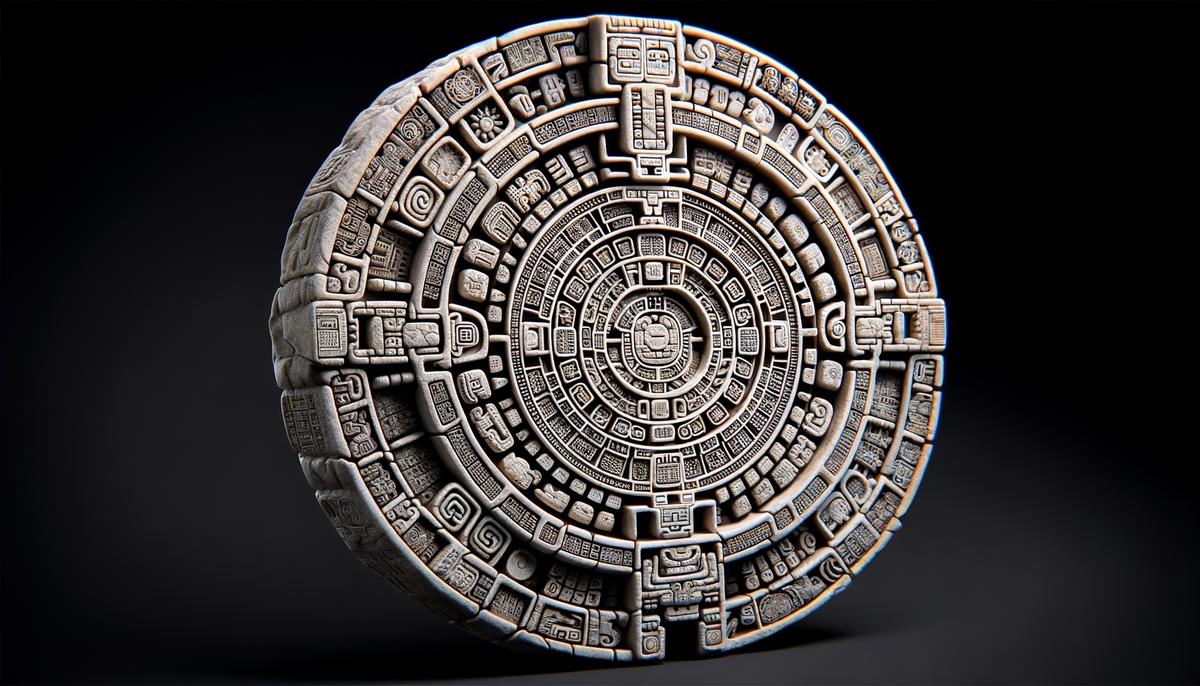
Religious Practices and Mythology
The religious and mythological framework of the ancient Mayan civilization is one of the most complex spiritual systems dating back millennia. This belief system influenced every aspect of Mayan life, embedding spiritual meaning into the cultural fabric that is still observed in the contemporary practices and beliefs of their descendants. The interweaving of religion, mythology, and cultural practices showcases a civilization attuned to the supernatural dimensions of their world.
At the heart of Mayan religious life were the gods, each embodying natural elements or human experiences. The pantheon included deities like:
- The Maize God, who represented agriculture and fertility
- Ixchel, the goddess of childbirth and medicine
- Kukulkan, the feathered serpent deity, symbolizing the unity of the earth and the sky
These deities reflected the Mayans' connection with nature and their understanding of human life. The rites and ceremonies dedicated to these divine figures acknowledged the relationship between humans and the cosmos according to Mayan worldview.
Mythological narratives expressed the Mayans' understanding of the world. These stories explained everything from the creation of humanity to the transition of souls into the afterlife, infusing everyday life with a sense of participation in a larger cosmic narrative.6 These myths laid the groundwork for ceremonial practices designed to honor the gods and ensure the continuation of essential natural cycles. The mythic cycles were integrated into the Mayan calendar system, which combined scientific observation with religious prognostication.
The religious beliefs and mythological stories of the Mayans found expression through various cultural practices. Ceremonial ballgames represented cosmic battles between the forces of light and darkness, blending athleticism with spirituality. Artisans imbued their craft with sacred significance, whether in weaving textiles patterned with symbols important to various gods or in creating pottery that depicted mythological scenes. These material expressions of faith served as prayers for divine favor and as education in the stories and symbols that sustained Mayan culture.
Though the grandeur of the Mayan city-states may have diminished, the religious and mythological core of their civilization persists. In modern-day Guatemala, traditional dances, rituals, and festivals continue to celebrate Mayan heritage, blending Christian elements with ancient indigenous beliefs. The enduring reverence for natural elements and the continued practice of traditional farming methods tie back to Mayan religious conceptions of harmony with nature. Contemporary interest in Mayan astrology underscores how their spiritual outlook continues to resonate beyond their historical timeframe.
Exploring the impact of Mayan religious beliefs and mythology on cultural practices reveals a society where art, architecture, daily routines, and cosmic understanding were integrated. As a testament to the enduring power of these beliefs, modern descendants and cultural enthusiasts worldwide continue to engage with and preserve this spiritual tapestry, ensuring that the Mayan culture remains a vibrant thread in the fabric of humanity.
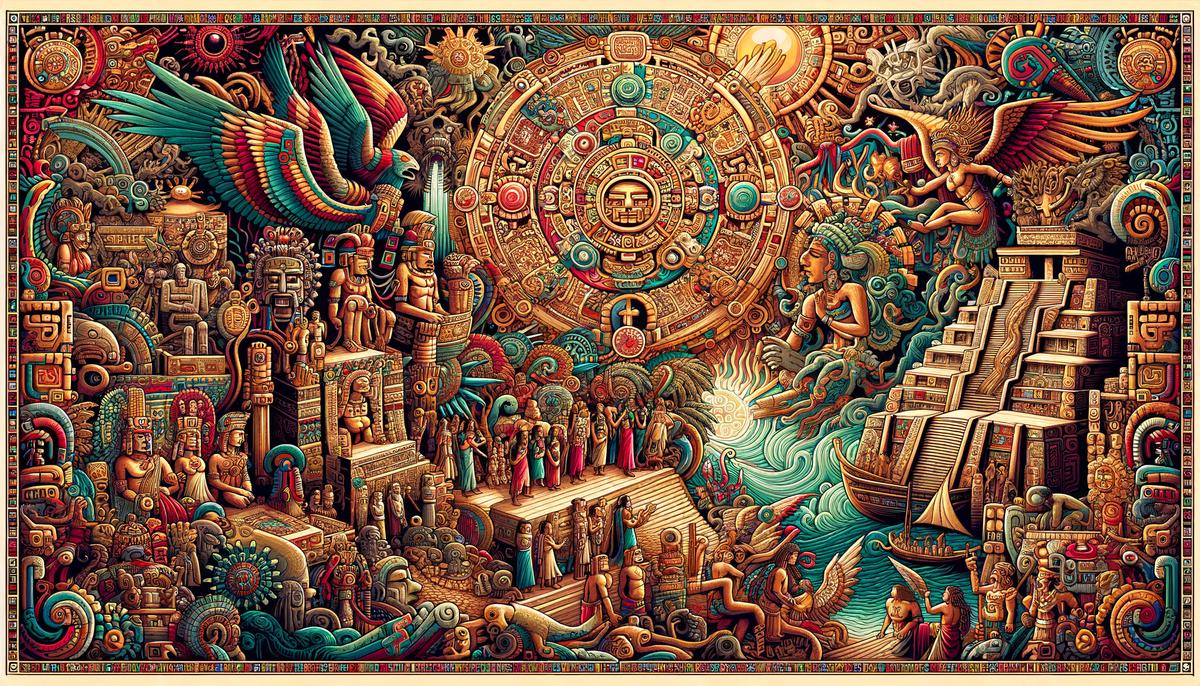
Mayan Influence on Modern Culture
The ancient Maya, with their complex calendars, impressive pyramids, and notable artistic achievements, continue to influence modern culture. This enduring impact illustrates a rich cultural heritage that remains relevant today. From the languages spoken to the foods enjoyed, and the artistic and architectural inspirations that shape contemporary creativity, Mayan practices are still present in today's world.
The Symbiosis of Languages
In the highlands of Guatemala and the sprawling landscapes of the Yucatán Peninsula, Mayan languages such as K'iche', Q'eqchi', Kaqchikel, and Yucatec Maya continue to be spoken by millions, bridging ancient wisdom with modern life.1 These languages, repositories of Mayan worldview and knowledge, enrich the multicultural tapestry of our global society, teaching us about diversity, respect, and the importance of preserving linguistic heritage in an ever-globalizing world.
A Culinary Feast of Mayan Inheritance
Mayan civilization also influences our taste buds, contributing dishes that have endured for millennia. Ingredients like corn (maize), beans, squash, chili peppers, cacao, and avocados, staples of the Mayan diet, now feature in dishes worldwide.2 The invention of corn tortillas and tamales, culinary staples derived from Mayan cuisine, underscore the global palette's debt to this ancient civilization. Today's fusion cuisines incorporate these elements in various creative combinations, showcasing Mayan culinary heritage in contemporary gastronomy.
Artistic Inspirations and Architectural Marvels
Modern artists and sculptors draw inspiration from Mayan themes, motifs, and techniques, integrating ancient symbols and narratives into contemporary works that celebrate both heritage and innovation. This relationship between past and present ensures that Mayan artistic traditions continue to inform and enrich global art culture.
The fascination with Mayan pyramids, palaces, and temples has inspired a genre of design that blends ancient principles with modern aesthetics. The concept of integrating astronomical observations into the construction of buildings is a Mayan practice reborn in contemporary sustainable architecture.3 The use of open courtyards, intricate stonework, and natural lighting in modern buildings draws from Mayan architectural principles, proving that ancient wisdom can inform future innovations.
Preservation and Adaptation: A Testament to Resilience
Traditional Mayan practices, from weaving textiles with intricate designs to sustainable farming techniques such as terraced fields, continue to thrive, adapting to contemporary needs while preserving ancestral wisdom. Organizations and communities devoted to maintaining Mayan traditions work to ensure this rich cultural inheritance is passed down through generations. They adapt these traditions to address contemporary challenges—be it through climate-resilient crops or by harnessing traditional knowledge for modern health remedies.
The Mayan civilization's contribution to our modern world extends beyond historical curiosity; it is a living presence in contemporary society. Whether through the languages we speak, the foods we eat, the art we create, or the buildings we inhabit, the legacy of the Maya remains intricately woven into the fabric of our daily lives.
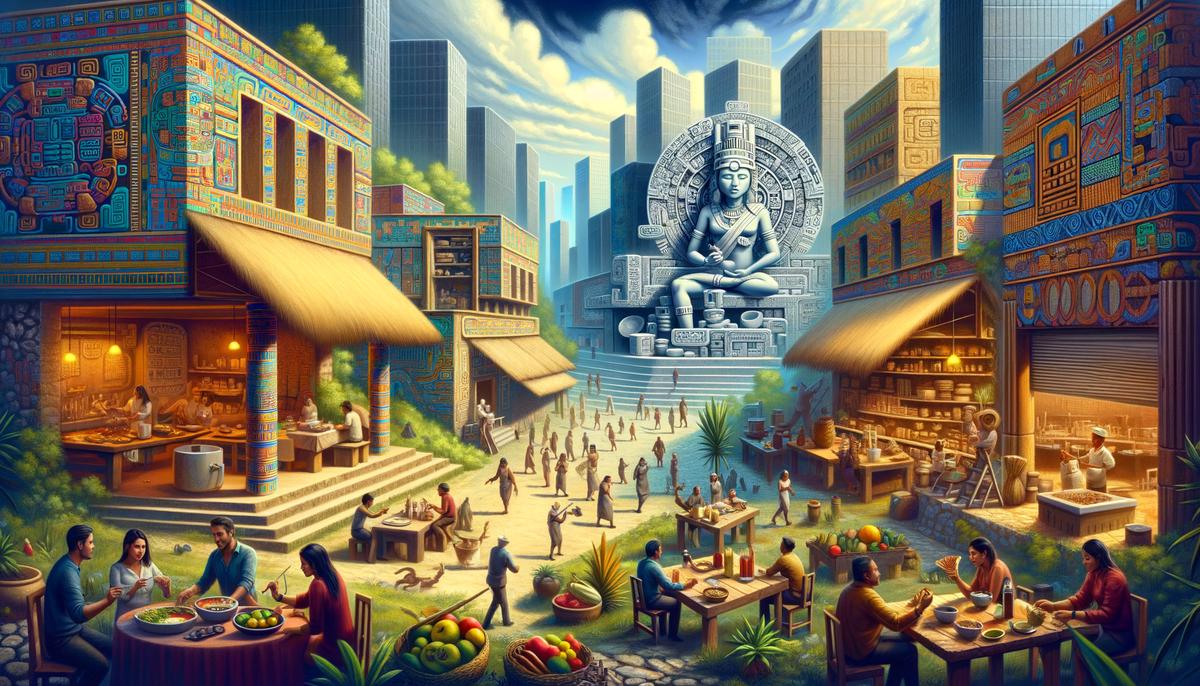
The legacy of the Mayan civilization endures as a noteworthy aspect of modern culture, illustrating the lasting nature of its contributions to science, art, architecture, and beyond. The resilience and adaptability of Mayan traditions, integrating into contemporary life, underscore an important message: the essence of a culture may evolve over time, but its core values and innovations continue to enrich the human experience.






















